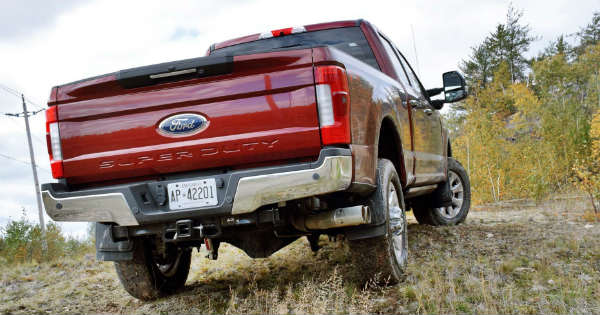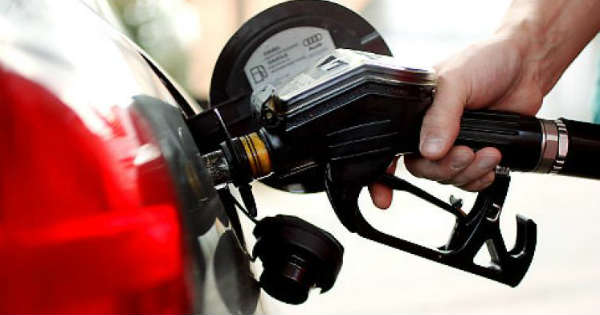Is your truck hurting your wallet with low gas mileage and frequent fill-ups? Read on to learn how to improve gas mileage in your vehicle. Did you know that about half of the cars on the road in Canada are driving on under-inflated tires? Or how about that 30 highway deaths a year in the UK could have never happened but for under-inflated tires? How about that in the US, cars are 3 times more likely to be in a part of an accident if their tires are 25% below what they should be? These are all scary statistics, but they go to show that little things make a big impact.

People tend to underestimate the importance of their tires. This one part of your vehicle has a major effect on both the performance and safety of your vehicle.
We’ve shown how it affects safety, so how about performance? Well if you’ve ever wanted to know how to improve gas mileage, start by checking your tires.
It’s not about just your tires though, we have put together a guide for how you can improve your gas mileage by doing little things.
How to Improve Gas Mileage Made Simple
Improving your gas mileage is about making many small changes that add up to big savings. The biggest struggle is going to be changing your driving your habits.
Slow down Speed Racer
We understand, we all have that inner dream of being a race car driver, beating the “competition” down the road. Unfortunately, this is the worst thing you can do for your fuel economy.
First, the faster you go, the more wind drag on your car. The more drag, the more your engine works to keep you moving forward. The harder your engine has to work, the more fuel you will use.
Second, the faster you try to accelerate and get up to speed, the more fuel you use. When the light goes from red to green, gently cruise up to speed instead of trying to go from 0 to 60 in 3 seconds.
Stop Beating up Your Brake Pedal
Every time you tap the brakes to slow down while driving your car has to work to slow down. Then it works to get back up to speed as you hit the gas again.
Instead, try leaving some space between you and the car in front of you. That way as traffic ebbs and flows you will have to make fewer corrections. This smoother drive will save wear and tear on your vehicle.
Follow the Manufacturer’s Directions
We will never understand why car owners think they know better than the manufacturer. If the maker of your car says you should use a certain kind of fuel, then use it.
By ignoring these directions, you are not allowing your engine to work at optimal performance. This means lower fuel economy for you.
Clean Your Vehicle
No, we don’t mean run your car through the car wash. What we are talking about is all that stuff you’ve been driving around in the trunk.
Extra weight in your car from heavy or large items is creating more work for your engine. The higher the weight, the more work. Remove any items from your vehicle that are adding unnecessary weight.
Reduce Your Drag
You know that roof rack you’ve been driving around with? Well, it’s doing you no favors in the fuel economy department. As you drive down the road its catching wind like that’s its job.
If you aren’t using it, take it off. This will make your vehicle streamlined again allowing air to flow smoothly over the roof of your car.
Bring Extra Gas
Sometimes it isn’t about improving miles per gallon, it’s about going to the gas station less often. A fuel transfer tank mounts in the bed of your truck allowing you to drive for longer without having to refill.
This saves you gas by not wasting it on the commute to and from the station. Just remember that adding another tank to hold fuel will increase the weight you’re carting around.
This solution really becomes beneficial for those who live in more rural areas or those who like to go out in the wilderness. Then the commute becomes more prohibitive than the extra weight.

Pump up Your Tires
We touched on this already so we’ll be brief here. Make sure you look at that sticker on the inside of your door jam. It will tell you what you need to pump your tires up to according to the manufacturer of the car.
This isn’t enough though. You also need to look at the tire itself. This will tell you what the maker of the tire recommends.
If you are using the stock size tire, these number should match. If you chose to modify your tire size, you may find that these numbers conflict.
The goal is to have your tires at the right inflation so that the tread sits flat on the road. Too much air pressure and you will ride on the center part of the tread.
Not enough air and your tire will compress too much wearing the tread out faster. It also increases the amount of contact the rubber has with the road. This increased contact creates more drag, thereby making your engine work harder to move the vehicle.
Clean Your Fuel Injectors
This tip may be a bit more than what the average owner wants to do. If you feel like you aren’t ready to tackle this project, you can always have a mechanic do it for you.
The fuel injector is what deposits fuel into the combustion chamber of your engine. This fuel then mixes with air and a spark is introduced. That small explosion that happens is what moves the piston and creates the energy transfer.
Over time these injectors become clogged and get stuck. This means they aren’t depositing the right amount of fuel into the chamber. You’ll want to take your injectors off and rinse them well. The entire process should take a few minutes.
Let Your Vehicle Breathe
When is the last time you checked the air filter? It’s that filter that cleans the air going into your engine. Over time it will become blocked and clogged with debris and dirt.
If it becomes too clogged, then there isn’t enough air getting into your engine. This will cause a decline in the performance of your engine. Go under your hood and take your air filter out.
If you have a high-quality one like a K&N then you can rinse it, let it dry, and reinstall. If yours is a lower quality you’ll have to replace it.
If you’re replacing it, why not upgrade to a better one? It’ll save you money in the long run by only having to wash it.
Do the Morning Full Up
The cooler fuel is, the denser the liquid becomes. This means you should fill up your tank in the morning and you’ll get more bang for your buck at the pump.
Don’t expect miracles, but depending on your tank size and driving habits you can expect anywhere from $5 to $10 a month in savings. That’s $60 to $120 a year.
The reason this works is because gas stations charge not on volume, but on flow rate. The volume gets estimated by the flow rate. The temperature doesn’t change the flow rate, only the density.
Start Planning Your Route
Here’s another reason why you are your own worst enemy when it comes to gas consumption. You need to start planning your errands and your route for the day.
You are wasting gas by running all over town and not creating the most efficient route to all of the places you need to go. Or you could be doing yourself an even bigger disservice by making many individual trips to and from your home.
You use more fuel when you start your engine from cold and then drive somewhere. By making many short spaced out trips, you could end up using almost double the amount of gas as one long planned out trip.
You’re a Gas Saving Pro
Take a look at this list and decide what small changes you can do to start getting better gas mileage out of your vehicle. Remember that you don’t have to make one big change. A lot of small changes will add up to big savings.
If you are like most Americans, just changing your driving habits will show a noticeable change in your fuel economy. Though you shouldn’t stop there.
Knowing how to improve gas mileage will not only save you money on gas, it will also extend the life of your vehicle.
If you want to push your car to the limit, find out how far you can drive once the low fuel light comes on.

